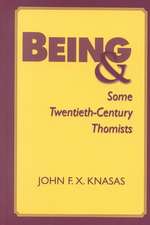Statistics in Kinesiology
Autor William J. Vincent, Joseph P. Weiren Limba Engleză Paperback – 15 mar 2020
As in previous editions, emphasis is placed on methods commonly seen in kinesiology, such as correlation and bivariate regression, t tests, analysis of variance (ANOVA), and the interpretation of interactions in factorial analyses of variance. The fifth edition also incorporates fully updated content reflecting the changing face of kinesiology:
- Comparisons of observational versus experimental research and nonparametric versus parametric methods of analyzing categorical and ordinal data
- More detailed coverage on how to calculate central tendency when data have been transformed (e.g., log transformations) and how coefficient of variation is used to interpret the standard error of measurement
- Expanded coverage of statistical graphs, including bar and plunger graphs, dot plots, and spaghetti plots
- Recurring discussions of the use of G*Power software
Statistical software tools commonly used in kinesiology applications--such as Excel, SPSS, JASP, and G*Power--are briefly introduced, encouraging students to apply their knowledge of mathematical formulas to critically evaluate and interpret computer results with confidence and ease.
With Statistics in Kinesiology, Fifth Edition, students will gain a solid understanding of the statistical techniques used in physical activity fields. The book's practical approach, based on the authors' more than 50 years of combined experience in teaching statistics, will make it easy for students to learn these important, but often intimidating, concepts.
Preț: 444.34 lei
Preț vechi: 548.56 lei
-19% Nou
85.02€ • 89.01$ • 70.35£
Carte disponibilă
Livrare economică 17-31 martie
Livrare express 01-07 martie pentru 44.90 lei
Specificații
ISBN-10: 1492560715
Pagini: 312
Dimensiuni: 213 x 279 x 24 mm
Greutate: 0.86 kg
Ediția:Fifth Edition
Editura: MG – Human Kinetics
Descriere
Statistics in Kinesiology, Fifth Edition With Web Resource, offers students in kinesiology and exercise science programs a unique introduction to the statistics concepts and techniques relevant to their specific field of study. Drawing from examples across kinesiology, including exercise physiology, biomechanics, physical education, and physical therapy, this essential text provides students with a statistical skill set that will enable them to analyze quantitative data and find answers to questions they will encounter in their specific disciplines.
As in previous editions, emphasis is placed on methods commonly seen in kinesiology, such as correlation and bivariate regression, t tests, analysis of variance (ANOVA), and the interpretation of interactions in factorial analyses of variance. The fifth edition also incorporates fully updated content reflecting the changing face of kinesiology:
- Comparisons of observational versus experimental research and nonparametric versus parametric methods of analyzing categorical and ordinal data
- More detailed coverage on how to calculate central tendency when data have been transformed (e.g., log transformations) and how coefficient of variation is used to interpret the standard error of measurement
- Expanded coverage of statistical graphs, including bar and plunger graphs, dot plots, and spaghetti plots
- Recurring discussions of the use of G*Power software
In addition, a new web resource offers abridged presentations of complex statistical concepts and an interactive platform to practice problem solving. Mini lectures, consisting of narrated slideshows, provide further explanations and may be quickly accessed through QR codes placed at the end of each chapter. Sample problems then provide an opportunity for students to put the concepts into practice.
Statistical software tools commonly used in kinesiology applications--such as Excel, SPSS, JASP, and G*Power--are briefly introduced, encouraging students to apply their knowledge of mathematical formulas to critically evaluate and interpret computer results with confidence and ease.
With Statistics in Kinesiology, Fifth Edition, students will gain a solid understanding of the statistical techniques used in physical activity fields. The book's practical approach, based on the authors' more than 50 years of combined experience in teaching statistics, will make it easy for students to learn these important, but often intimidating, concepts.
























